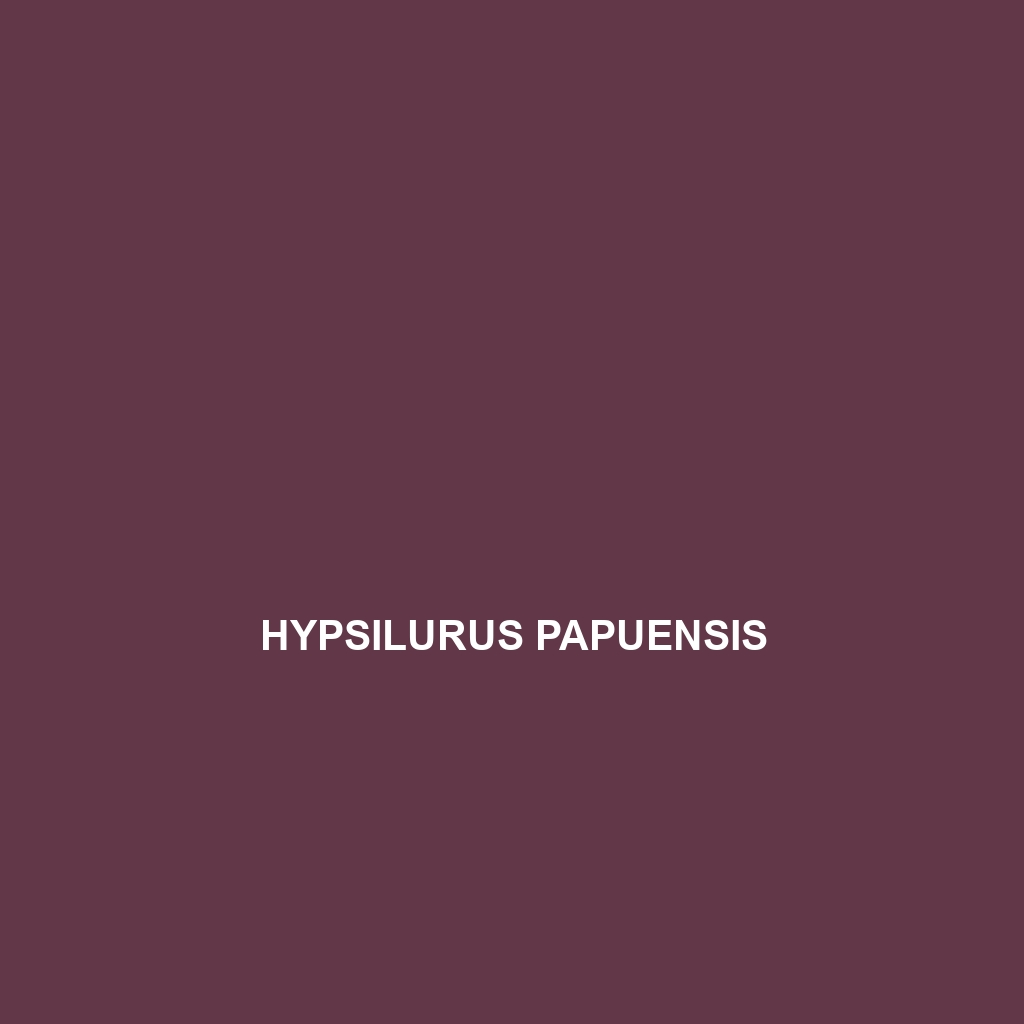Common Name
Hypsilurus papuensis
Scientific Name
Hypsilurus papuensis
Habitat
Hypsilurus papuensis, commonly known as the Papuan tree monitor, is predominantly found in the lush rainforests of Papua New Guinea and surrounding islands. This species thrives in humid, tropical climates where rainfall is abundant, allowing for a rich diversity of flora and fauna. The upper canopy layer of these rainforests provides ample opportunities for arboreal living, where these monitors can effortlessly climb and navigate through dense foliage. Additionally, Hypsilurus papuensis has also been observed in secondary forests and mangrove swamps, showcasing its adaptability to various moist habitats. The temperature and humidity levels of these regions play a crucial role in supporting their active lifestyle, making them a fascinating study in ecological diversity.
Physical Characteristics
The physical attributes of Hypsilurus papuensis are striking and distinct. Adult specimens typically range from 60 to 90 centimeters (approximately 24 to 35 inches) in length, including their long tails. One of the most notable features of this species is its vibrant green coloration, which allows it to blend seamlessly into the rainforest environment. The body is elongated with a flat head and a long, muscular tail that aids in balance and climbing. The skin texture is smooth and may exhibit patterns of yellow or blue, contributing to its overall striking appearance. These colorations and unique adaptations not only serve as camouflage against predators but also play roles in mating displays.
Behavior
Hypsilurus papuensis is primarily arboreal, spending much of its time in trees. They are mostly diurnal, being most active during the daylight hours when they hunt for food and interact socially. Their social structure can be quite complex, consisting of established hierarchies within populations, particularly during mating seasons. Notably, the species exhibits fascinating mating rituals that encompass elaborate displays and physical interactions. As a result, these behaviors can attract significant interest, particularly among herpetology enthusiasts. Their movements are characterized by agility and speed, allowing them to escape from potential threats quickly and efficiently.
Diet
Reproduction
The reproductive cycle of Hypsilurus papuensis is noteworthy, with mating occurring during the warmer months, typically from late spring to early summer. Females lay clutches of 4 to 8 eggs, which are deposited in soft, moist soil or leaf litter, providing the necessary humidity for the developing embryos. The incubation period lasts around 60 to 80 days, after which hatchlings emerge fully formed and are capable of climbing soon after. Parental care is minimal, as the young are independent right after hatching. However, this strategy may ensure a higher survival rate by reducing competition among siblings.
Conservation Status
The conservation status of Hypsilurus papuensis has not been officially categorized by the IUCN Red List, leading to calls for further research into its population dynamics and habitats. Nonetheless, habitat destruction due to logging, agriculture, and urban expansion poses significant threats to their populations. Efforts aimed at habitat restoration and the establishment of protected areas are crucial for the survival of this species. Raising awareness about its ecological significance and promoting conservation initiatives can help mitigate these challenges.
Interesting Facts
Hypsilurus papuensis displays several unique adaptations that make it an interesting subject of study. For instance, their ability to change color slightly, influenced by mood and environmental conditions, aids in communication and temperature regulation. Additionally, these species have a complex set of vocalizations, which are utilized both in mating and territorial disputes. These fascinating behaviors and adaptations contribute to the diversity of wildlife in Papua New Guinea and highlight the ecological wealth of the region.
